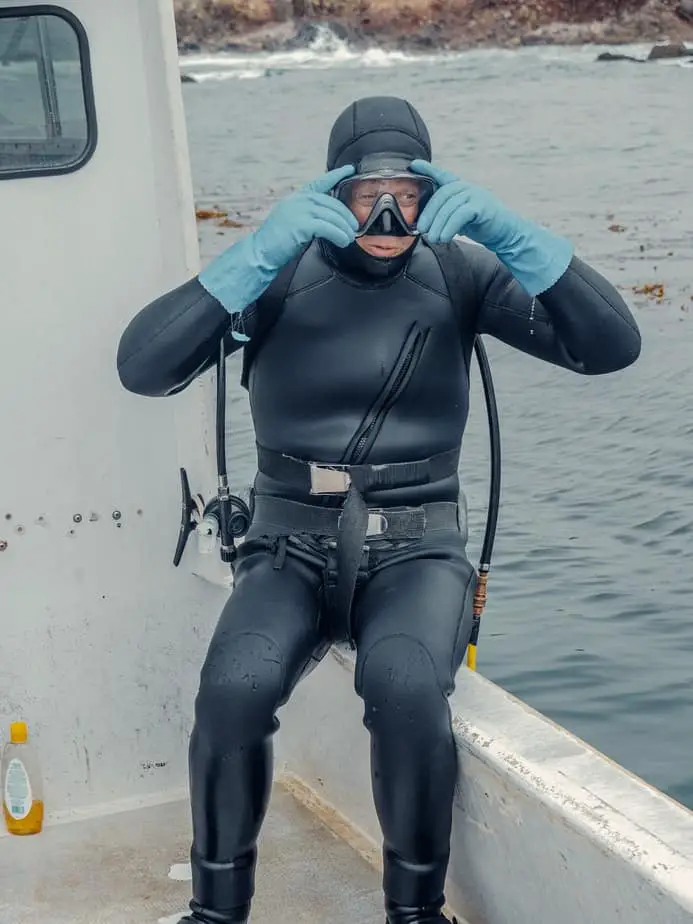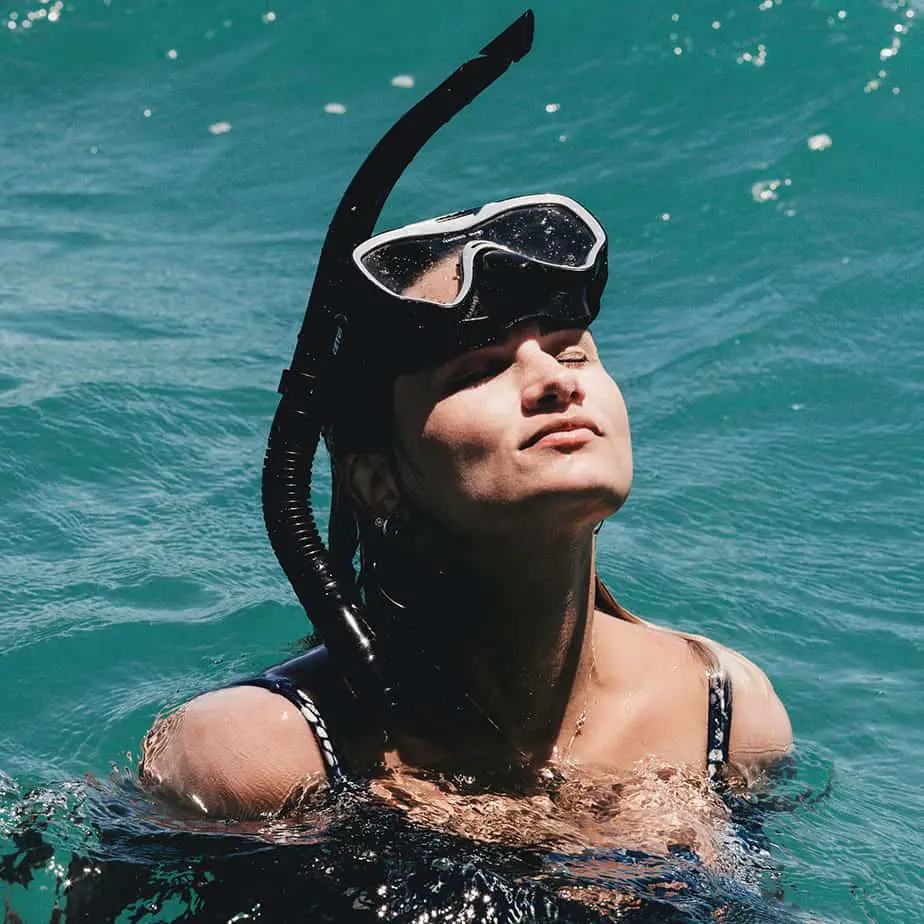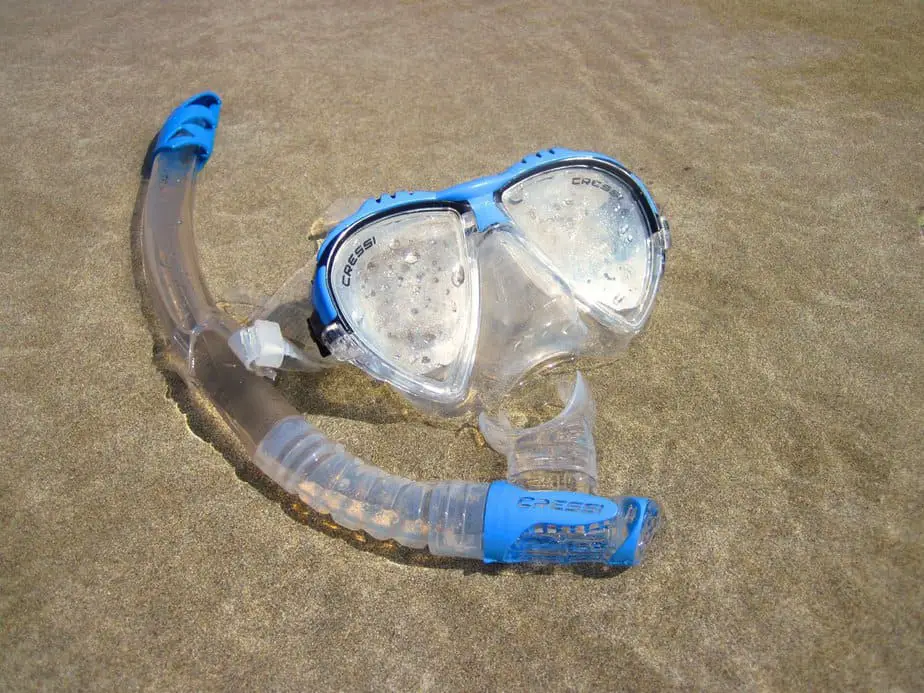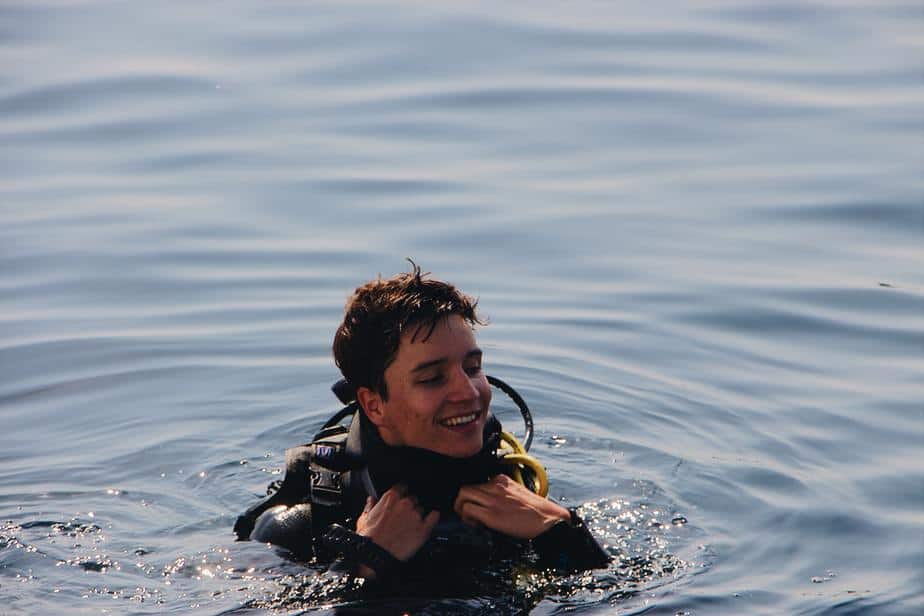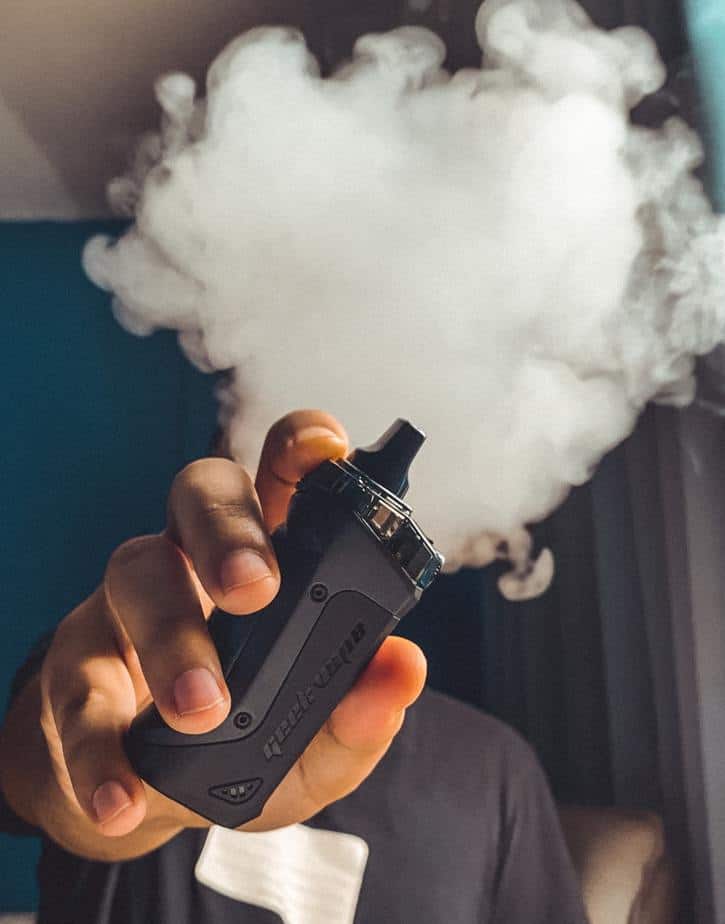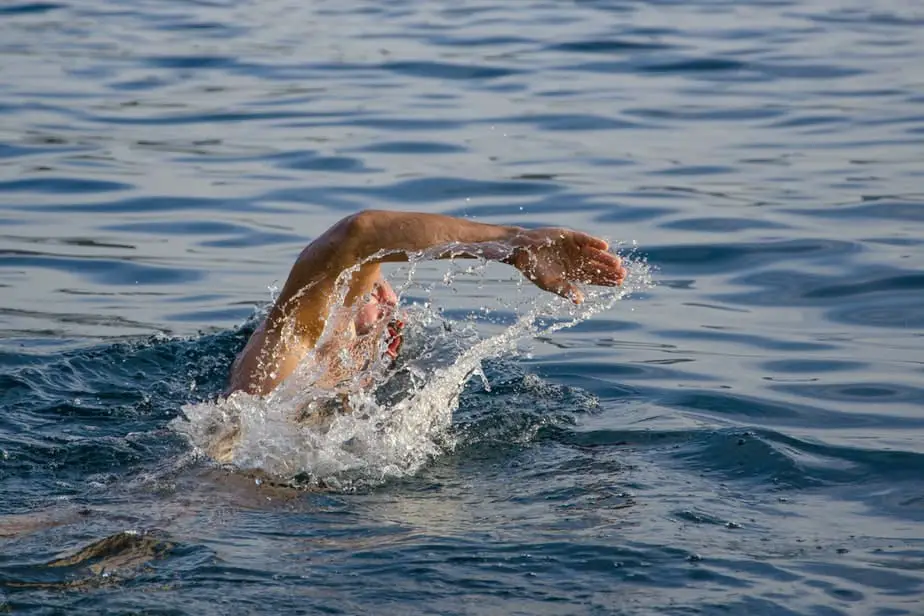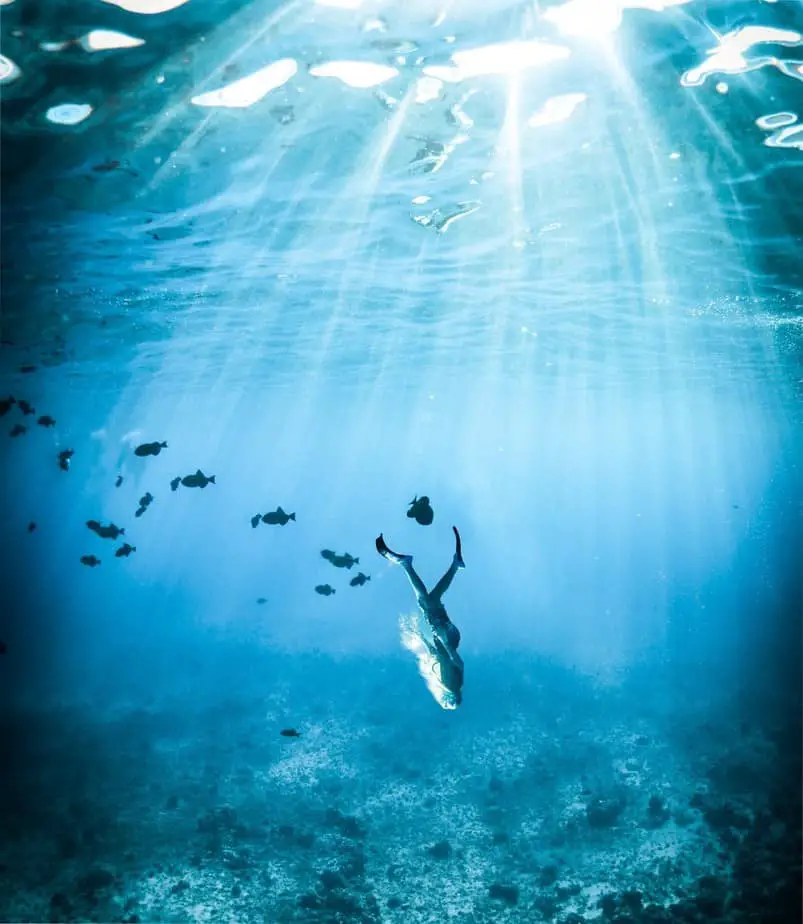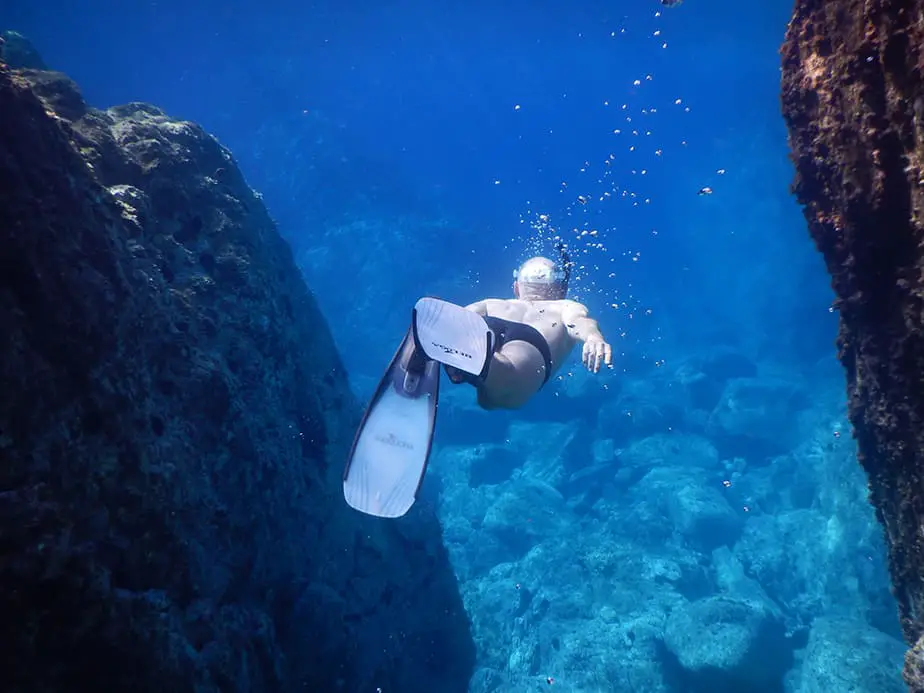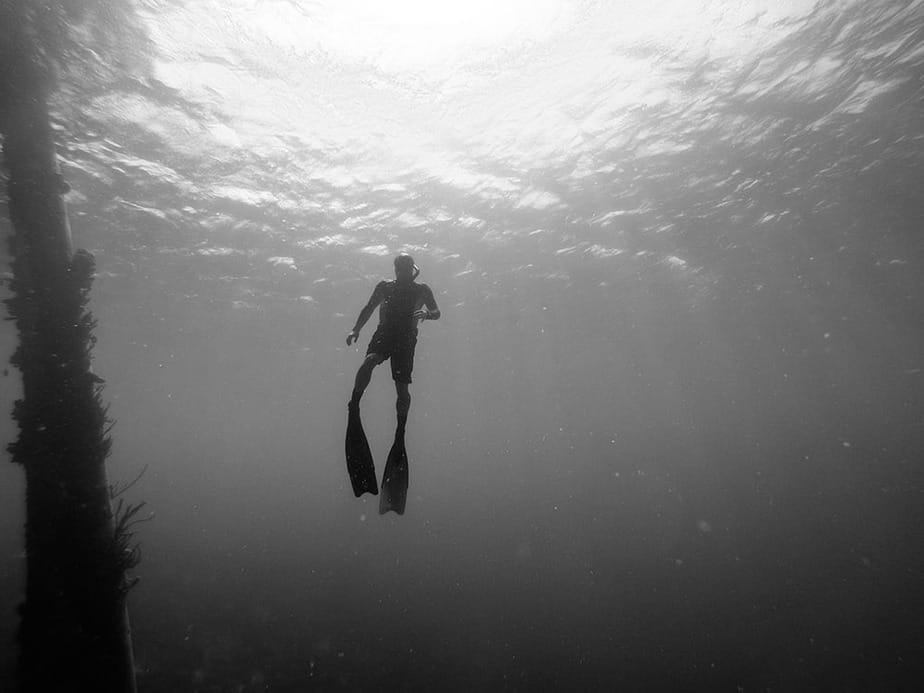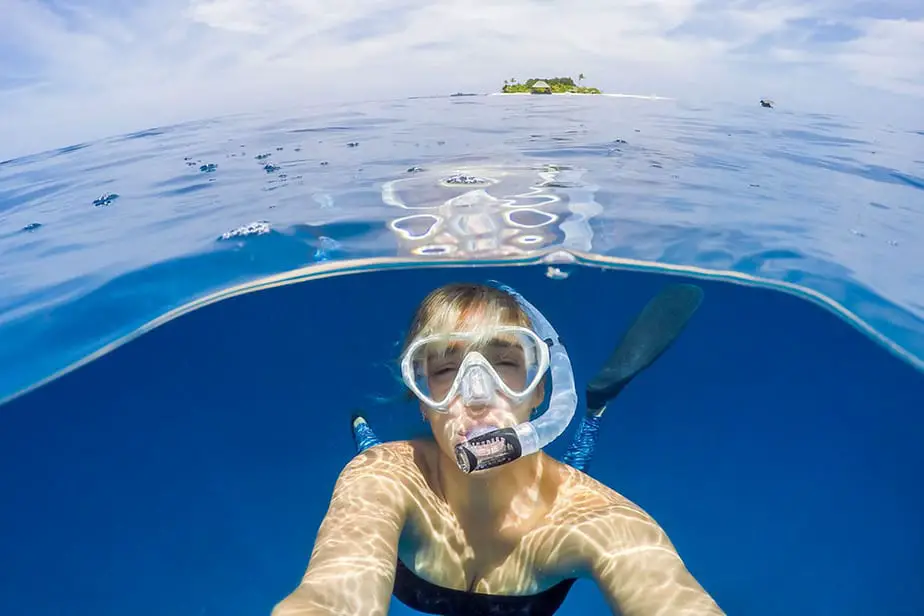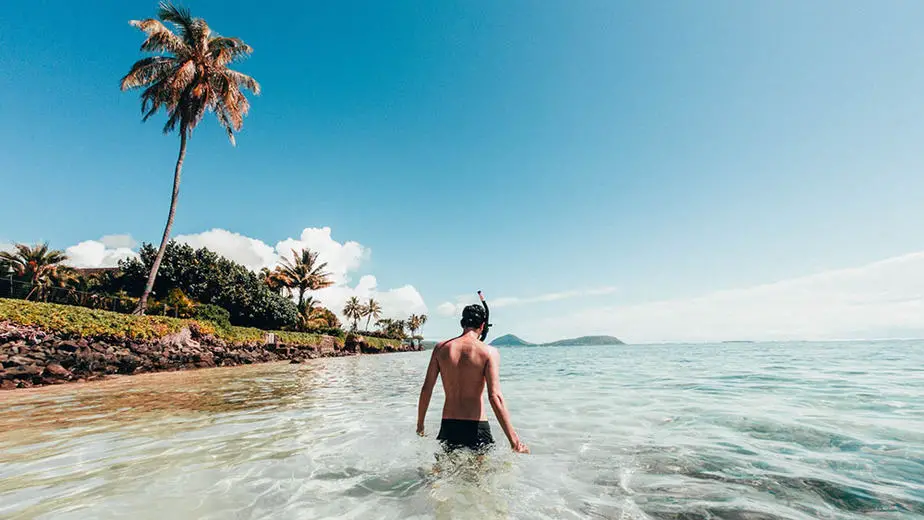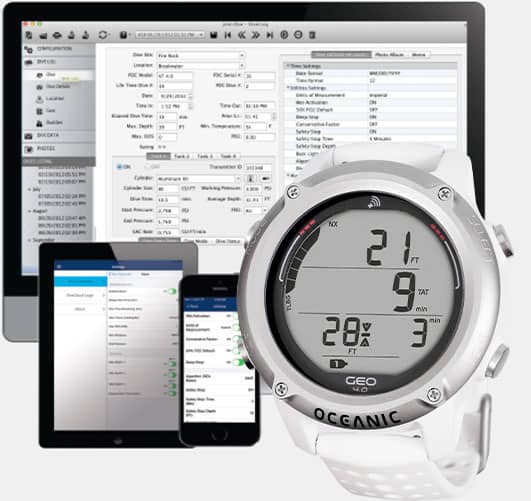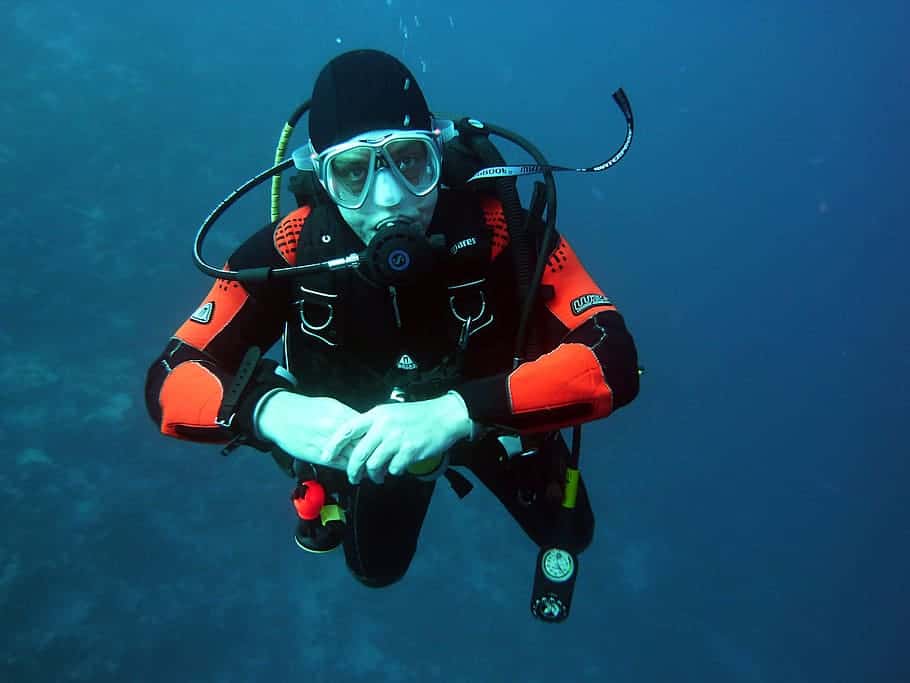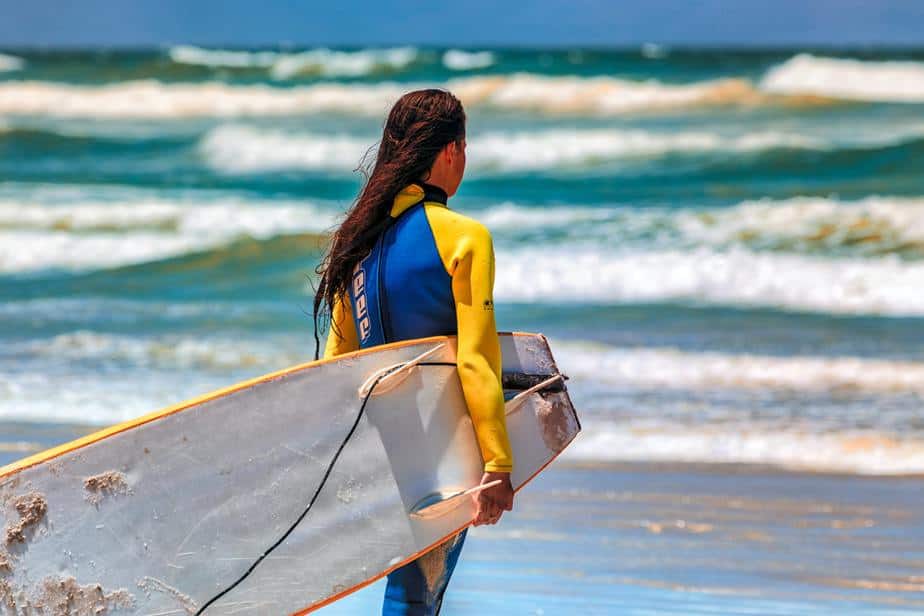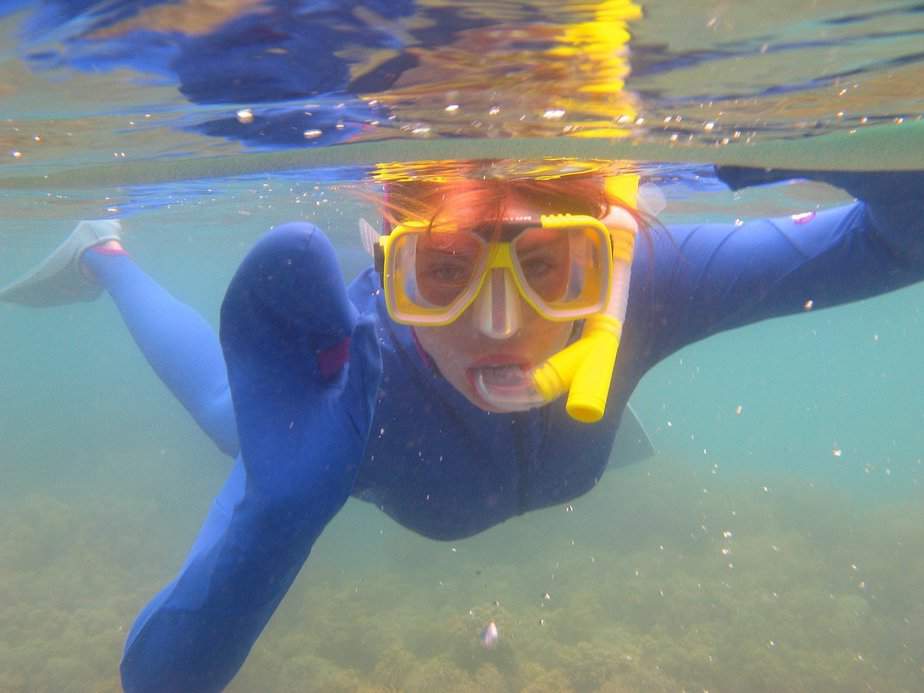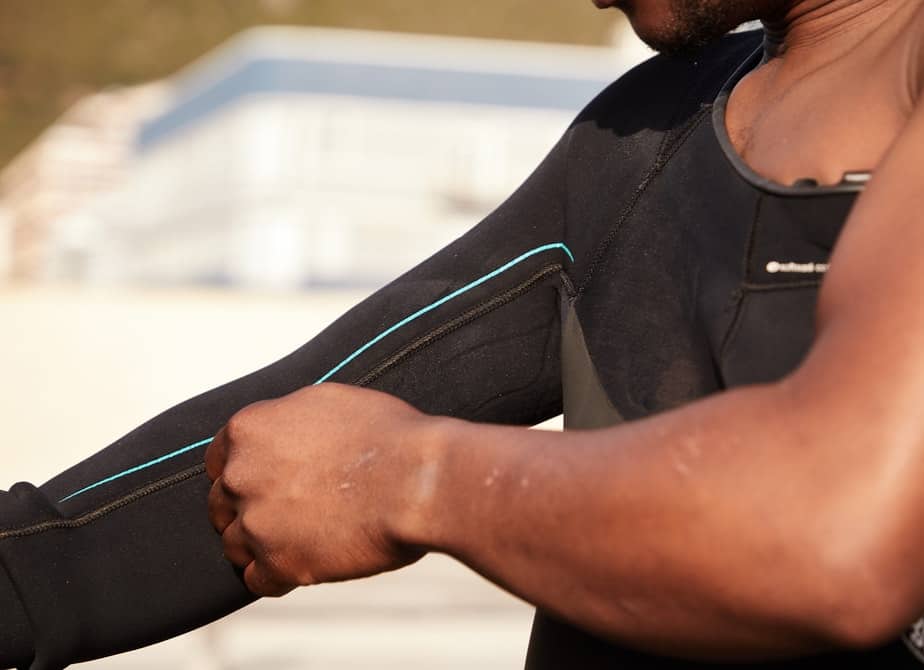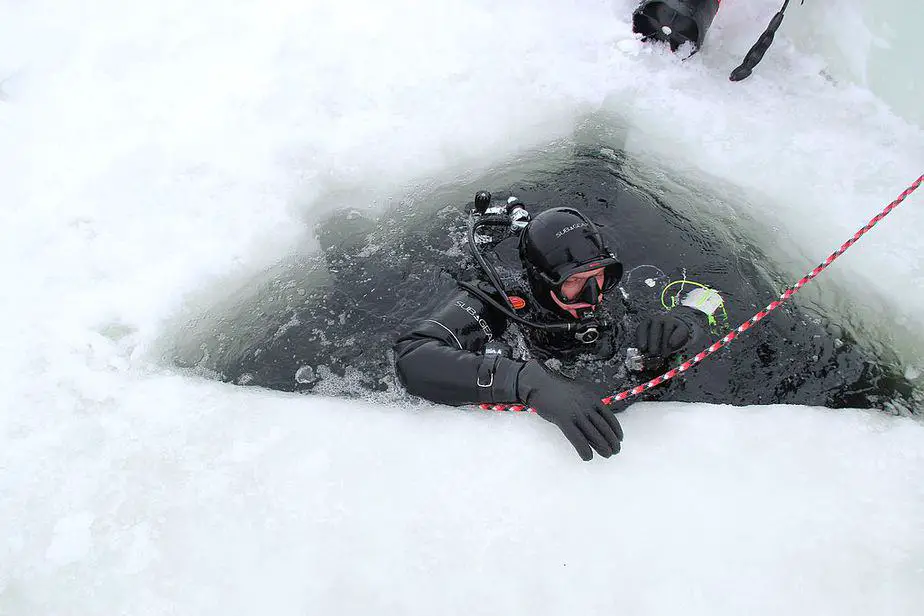It’s very difficult, if not impossible, to enjoy scuba diving or snorkeling if your mask doesn’t properly fit your face. An ill-fitting mask will not only cause discomfort, but it can also cause water leaks and pain. Sometimes a mask can be so uncomfortable and distracting that you literally cannot focus on anything else; that’s not a good way to spend your vacation is it?
If you find that your mask is causing you pain in any of these areas: the bridge of the nose, under the nose, your forehead, eyes, or even ears, then it’s very likely you have an ill-fitting mask. In some cases, it might not be the mask itself that’s causing you pain but the pressure differential you feel when you haven’t equalized yet.
Understand that the root of the problem does not necessarily have to do with the mask itself but rather how difficult it is to find a mask that fits you (i.e. the mask is not bad per se, just not compatible with your face).
As it currently stands, for many people, finding the right mask is an arduous process of trial and error and the moment you find a good mask is like winning the lottery. Therefore, this article will also focus on prevention of the problem – by helping you find the right mask in the first place – so that you don’t experience any of the pain and discomfort of a mask that doesn’t fit.
Common areas where dive masks can cause you pain
It’s very obvious when you have a poorly fitting mask. You don’t necessarily even need to enter the water to know that a mask is bad for you if it’s causing you pain. You need to look for a mask that fits the shape of your face so that it can form a waterproof seal.
People who are shopping for a scuba or snorkel mask for the first time may not know this, so they often try to force the mask to fit on their face by tightening the mask strap so much that it’s painful and causes pain on your face. We cover the most common areas below:
Pain on the bridge of the nose/under the nose
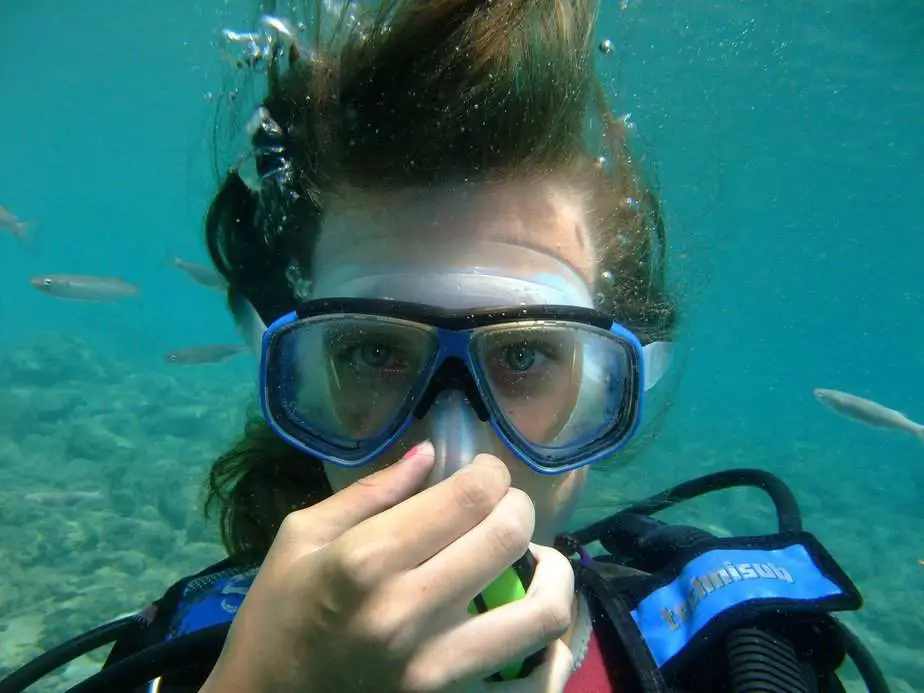
A common location for the dive mask to cause you soreness or pain is on your nose. You can sometimes feel the pain on the bridge of your nose or under it (the septum). This doesn’t necessarily mean the mask fits badly, but that could be one possibility.
One possibility is that the strap is too tight and also raised slightly too high or low on the back of your head. If the mask is too high, then this can cause the mask to press against the bottom of the nose. Positioned too low, and it can dig into the bridge of the nose.
To fix this, try adjusting the mask strap so that it’s horizontal and looser. If loosening it even a little bit causes it to leak, then we can confidently say that the mask doesn’t fit your face shape. It should only take a little bit of suction for it to stay on your face if the fit is good. Underwater, the water pressure will also help to keep it in place.
As an aside, the mask strap does not need to be tight to seal on your face. Assuming its design conforms to your face and that you do not have facial hair or strands of hair in the way, then it shouldn’t take much for it to form a waterproof seal on your skin. If you rely on strap tension to form a seal, it’s not a good fit and the tight straps will dig into your skin.
Pain around your eyes
We are going to assume that you know how to equalize and that the cause of your eye pain is not due to mask squeeze (its effects can be seen in the video above). However, if it is, then we highly recommend you read this article to learn how to prevent it.
Assuming you just have the regular variety of mask discomfort affecting your eyes, the cause is again likely to be a poorly fitted mask. In this case, the mask is likely too narrow. Dive masks should fit well over your eyes; the mask skirt should preferably rest on your temple. Conversely, if the skirt reaches to your hairline, it’s too big.
If the mask is too close to your eyes, it also becomes a major hazard the deeper you dive. As the pressure increases, you will get the worst case of mask squeeze. It’s bad enough on a mask that fits well; if the mask is pressing against the orbitals of your eyes, the pain will be excruciating. To prevent mask squeeze, you need to know how to properly equalize the pressure inside.
Pain around the ears
It’s possible that a tight mask strap could be positioned too closely to the ears, aggravating them. Obviously you are not placing the mask strap on your ear flap, but its proximity and tightness can still cause discomfort to your ears. In that case, the solution is once again to loosen the strap and maybe adjust its positioning so it doesn’t reach your ears.
There is also the possibility that you are assigning the blame of your ear pain to the wrong culprit. Do you, perhaps, have an ear infection? Sometimes water that has not fully dried out can linger and the bacteria can cause an infection. Read this article to learn more about diving with ear pain and how to prevent it.
Pain in/on the forehead
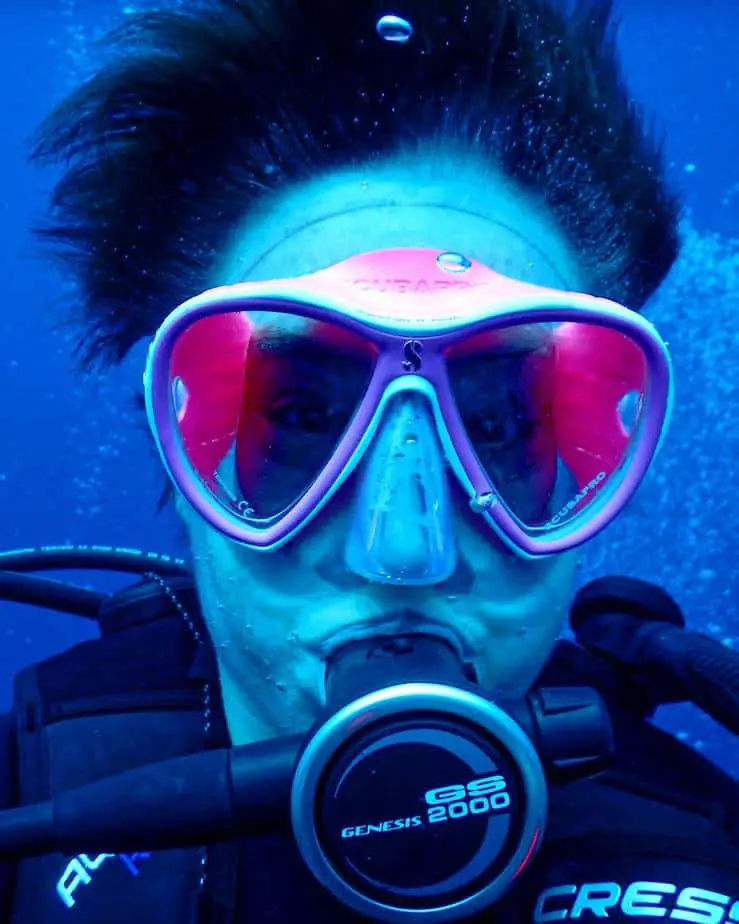
If you’re feeling forehead pain, hopefully it’s not because you like to leave your mask on your forehead when you’re waiting at the surface. If your forehead pain is superficial, i.e. on the surface, then it almost certainly has to do with your mask. Try loosening the strap or sliding it down a bit.
That said, if your forehead pain is inside your head, then it’s likely that you are suffering from sinus squeeze or aerosinusitis. Sinus squeeze is what occurs when you are having trouble equalizing the air pockets in your sinuses. You should be equalizing early and often. In other words, you should be equalizing before you feel any pain.
For example, you should be equalizing while you’re on the boat, then by the surface of the water, then with almost every breath while underwater. Does that give you an idea of how early and often you should be equalizing? Do it. A lot.
Sometimes, despite your best efforts, you still struggle to equalize. If you are ever having trouble equalizing, a quick “fix” is to stop your descent, go up a couple of feet and try equalizing there before descending again – at a slower pace this time, too.
Another equalization tip is to elevate your head first. This tip applies both when you’re on land and underwater.
Next, if you tend to experience sinus squeeze, then try cleaning out your sinuses before each dive. You can try using a neti pot to rinse any debris or mucus and to alleviate it if you have nasal allergies.
Some of these tips may or may not work for you. We are just trying to list as many tips in the hopes that one of them works out for you. At least give it a try. Do not keep descending and ignoring your pain.
Since equalization problems are no joke, you should be very cautious with your descent. Do not descend too quickly in case you are suffering from sinus squeeze or any other squeeze. You should also be descending feet first. This lets you have more control of your descent rate with fin kicks. You should also have total mastery over your BCD, and there is even a course to help you out with that.
Lastly, you should never, ever dive with a cold or even a runny nose. Not only will your sinuses be congested due to the cold, making it difficult to equalize in the first place, but what we are really concerned with is reverse squeeze.

Imagine being at depth and ready to ascend only to find that you are struggling to equalize. This phenomenon is known as reverse squeeze. The problem is that, being at depth and close to the end of your dive, you are time limited. Your air supply is quickly running out but you can’t ascend because you can’t equalize.
If you are forced to ascend anyways because your air supply is out, then you will basically suffer massive barotrauma from your inability to equalize and a major case of decompression sickness since you do not have time to do a deco stop or even a safety stop. The chances of you surviving this ordeal is slim to none.
That’s also why you shouldn’t take any cold medication or nasal decongestants before diving. It may be effective at first, but what happens if it runs out near the end of your dive? Taking medication can potentially set you up perfectly for a reverse squeeze, which can be fatal.
With that said, some people take Sudafed anyways because it comes in 12 and 24 hour doses. I am erring on the side of caution and warning you not to rely on any medication. Even if it solves your sinus squeeze problem, it could make you drowsy which is another dangerous issue.
My advice: if you’re sick or even suffering from nasty allergies, just don’t dive, please. You may be tempted to dive while sick because you paid good money booking your trip in advance, but consider if it’s worth gambling your life and risking reverse squeeze or if you should just eat the cost and miss out on a few dives.
Pain at the back of the head
Finally, if you are experiencing pain in the back of your head, then the issue almost certainly has to do with your mask strap. You have a few options here. The most obvious one is, again, to loosen the mask strap. I’m guessing you already tried that and that’s why you’re looking up alternate solutions.
The next option is to get a new mask with a thicker strap that fits you better, or you can purchase a mask strap cover.
For those unaware of what a mask strap cover is, it’s essentially a soft piece of neoprene that can be placed over the strap, adding some extra padding. This prevents the strap from having direct contact with your head, stopping it from digging painfully into the back of your head or tearing out your hair.
If you care about matching your scuba gear in color or design, then there are definitely a ton of options available to you. Mask strap covers come in all kinds of designs for those who want to be fashionable even while underwater. Or you can be purely utilitarian and pick a color that stands out the most underwater so you can be easily spotted and identified. The choice is up to you.
Why you might need a new mask
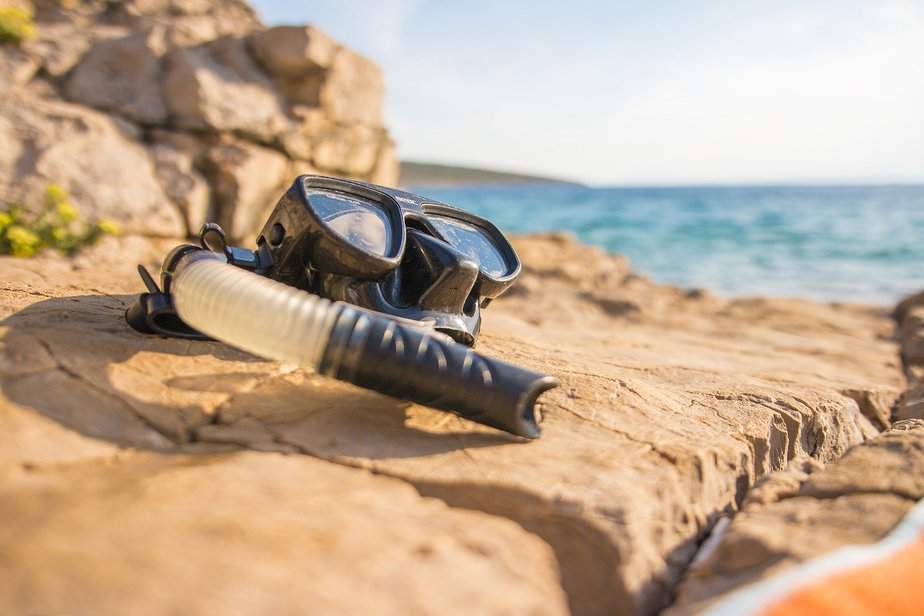
When your problem stems from an ill-fitting mask, then you don’t have much choice but to get a new one that does fit the shape of your face. Luckily for you, compared to other scuba equipment, masks are very affordable. Try everything you can with your current mask to see if you can resolve the pain, but if worst comes to worst, be prepared to pick up another mask.
I recommend you try out different brands to see which one most accurately conforms to your facial structure. Manufacturers have different ideas on what is the best mask design, and chances are if a mask from one brand does not fit you well, then getting another one from the same brand will result in the same problems.
Depending on where you are buying from, some stores may allow you to return the mask. Be careful you stay within their return policy so that you have a chance to return it if your new mask is giving you problems as well.
How to test if a mask fits your face
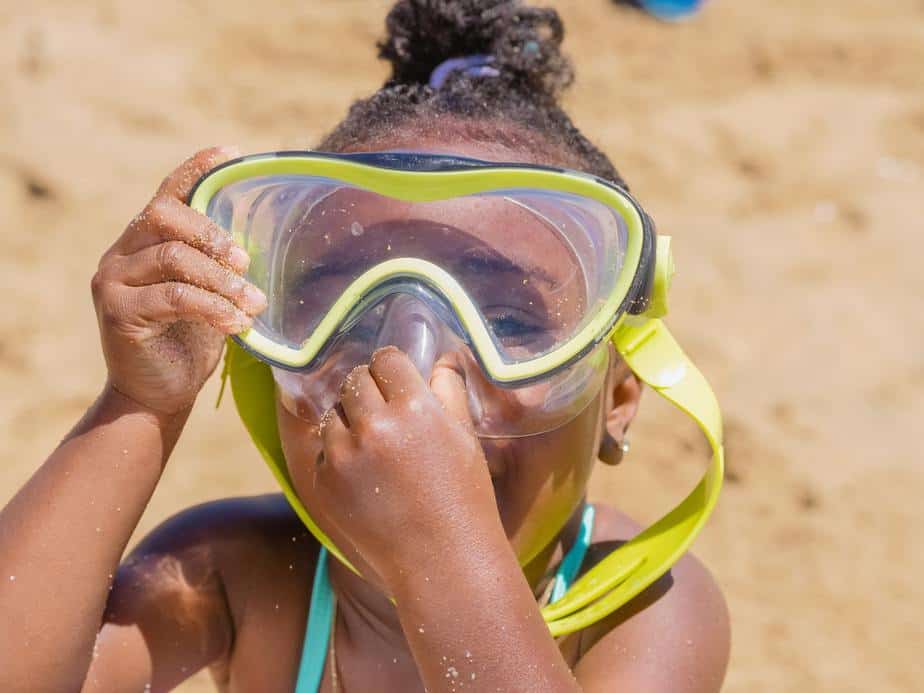
The best solution to a problem is prevention of the problem. If the scuba or snorkel mask hurts your face, chances are the mask either doesn’t fit you properly or is not adjusted properly, and so picking the right mask is crucial if you want to prevent facial pain.
In this section, we will explain in great detail how you can select a mask that fits your face. We are assuming you have almost no experience and that you are only buying your second mask (because the first one is causing you pain or discomfort).
The conventional testing method and why it is not reliable
The conventional wisdom states that you can easily test if a mask fits your face by placing the mask over your eyes and nose and inhaling through the nose. This is known as the negative pressure test. If the mask sticks to your face as you inhale without the strap on, that means no air is entering through the edges, and that supposedly means the mask seals tightly to your face.
On the surface, this makes a lot of sense. However, doing the test as described would result in many false positives; the majority of the masks will appear to fit your face but when you actually enter the water, it’ll still leak. What’s going on?
When inhaling, the negative pressure pulls the mask skirt inwards, increasing the total surface area it is in contact with against your skin. Depending on how hard you are inhaling through the nose, the negative pressure you create between the face and the mask can be greater than the actual pressure you’d experience while diving or snorkeling.
Instead of relying on negative pressure, we need to rely on the strap to hold the mask in place (we’ll go over how to adjust it further down). Yes, there will be water pressure at depth and maybe even a bit of negative pressure inside the mask before you equalize, but it’s still not an accurate recreation of what’s happening.
At various points during the dive, the ambient pressure will undergo various changes. For instance, during the ascent, the negative pressure will be lost and will instead swing in the other direction as the air expands inside the mask and the pressure decreases.
Our recommended testing method
Rather than perform the negative pressure test which we feel is inaccurate, you should instead do this simple solution:
- Tilt your head back so that you are staring at the ceiling.
- Place the mask over your eyes and nose, but do not inhale through your nose.
- (Optional but recommended) Have a friend, family member, or shop assistant examine how the mask skirt sits on your face. Ideally, it should be touching your face all around. If there are gaps, then it’s not a good fit.
- If no one else is present, you can just test the fit yourself by running your fingers around the mask trying to find if there are any gaps in the seal.
Simple and intuitive, right? By doing this test, you will identify which masks already hold a similar shape as your face, and which ones don’t.
You don’t need to rely on water pressure to deform the mask skirt just so it can have a tight seal. The mask should fit well enough on its own with equal pressure outside and inside.
What to do about gaps
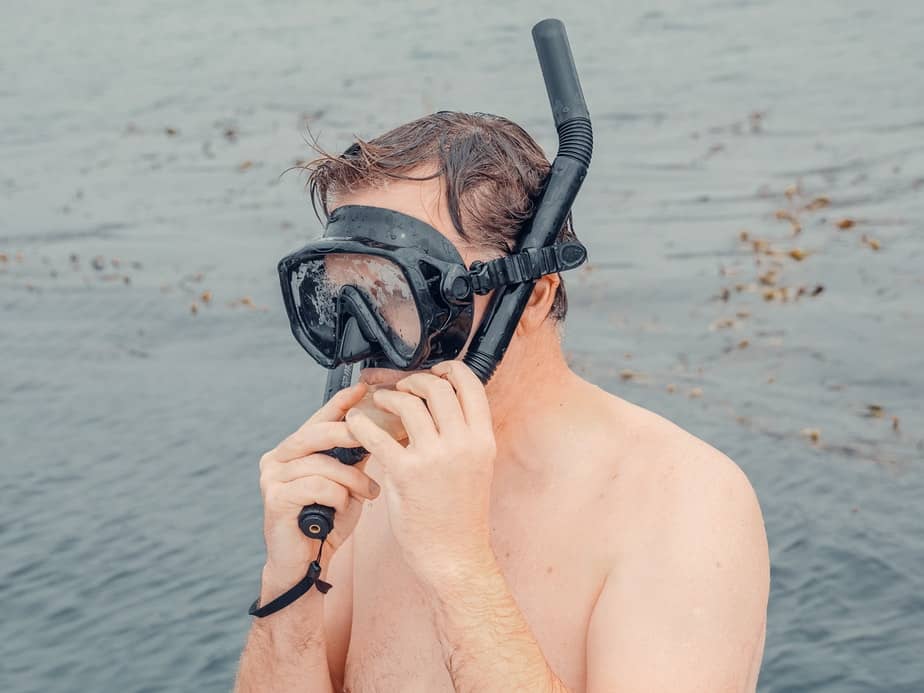
As mentioned, if the mask skirt has any gaps (i.e. it does not completely touch your face), then the mask is not perfect. Depending on how big the gaps are, my advice is: probably not that one.
With that said, sometimes you don’t have much of a choice. A common scenario is that you are on a vacation and you can only use rental equipment. Now your choices are limited, so you have to make due with what’s available.
Chances are, rental gear won’t fit you perfectly. You can still do the test we described above to help you find the mask with the least amount of gaps. If there are only some small gaps at the bottom or top, it might still be usable!
Try securing the strap lightly and see if that closes the gap. If not, then you might be forced to tighten it further. Do so incrementally until the gaps close; the strap should not be very tight at all. If you must tighten the strap so much that it digs into your skin, then that’s another sign the mask is a bad fit for you.
Note: If the gaps are on the sides of the mask, then put that mask down. It’s too wide for you and there’s nothing you can do about it. You need to find a narrower mask instead.
Lastly, some masks are designed for children. If you have a smaller face, those masks might be viable. Just make sure that they aren’t so small that the skirt touches your eyebrows. Any strands of hair will prevent the skirt from forming a tight seal. There are products that can help, but they aren’t foolproof.
How tight should the strap be?
As we mentioned many times by now, it is not necessary nor is it recommended to pull the mask strap too tight. Ever. That’s the most common reason why a scuba mask can hurt your nose, eyes, or any other area on your face.
If a mask fits your face, over-tightening it can actually be detrimental to its seal. The reason is that the strap can misshape the skirt, causing it to deform instead of sitting gently on your face. For this reason, ironically, sometimes the fix to a leaky mask is to loosen its straps.
Another consideration is where the mask strap is affixed to. In many mask designs, the strap is affixed directly to the soft skirt of the mask rather than the hard frame. In this case, over-tightening the strap would place undue stress on the skirt and can cause it to tear.
Keep in mind that the biggest determining factor in how well a mask fits is how closely it conforms to the shape of your face. Therefore, you do not need the mask straps to be very tight. If the fit is bad, no amount of over-tightening is going to fix the problem.
The mask straps should instead be as loose as possible while still ensuring the mask stays on your face. Only tighten it as you need to if you notice water is leaking in. Just a little bit can go a long way, so let’s not go overboard.
Lastly, as for the positioning of the strap – up or down – that will depend on what kind of pain you’re experiencing. If it’s too low, the mask will ride down the face, likely causing pain in the bridge of the nose. Too high, and the mask will dig into your septum (the area beneath the nose). Adjust as you see fit until it feels comfortable.
Getting a mask with the right fit is not an exact science, and we can only give general advice because everybody’s face is different and mask designs are not uniform. Give our tips a try and see if your pain subsides. Good luck!

